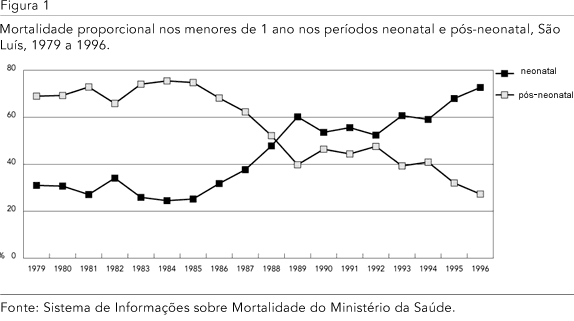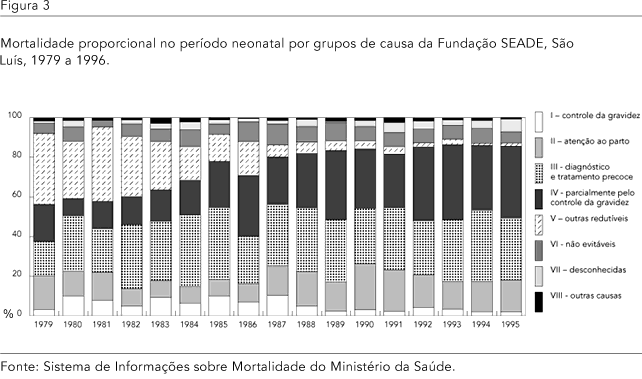This study examined neonatal mortality trends in São Luís in the last 18 years. The early and late components were assessed and causes were classified according to SEADE Foundation criteria based on reducibility of deaths and timing of prevention (during prenatal care, childbirth, or neonatal care). Data were derived from official live birth and death records. We detected an unexpected increase in the neonatal mortality rate, due primarily to a steep rise in early neonatal deaths. Causes reducible by early diagnosis and treatment (other specific infections and other neonatal respiratory causes) and those partially reducible by adequate monitoring of pregnancy (preterm births, low birth weight, and respiratory distress syndrome) showed the largest increase. Conversely, the post-neonatal mortality rate fell. The infant mortality rate remained the same, reflecting these antagonistic trends. The important rise in the neonatal mortality rate from 1995 onwards suggests a deterioration in the quality of obstetric and neonatal services. The high cesarean rate and overcrowded neonatal services (i.e., unable to cope with increasing demands foe specialized neonatal care) indicate the urgent need for restructuring the mother and child health care system.
Neonatal Mortality; Infant Mortality; Child Health







